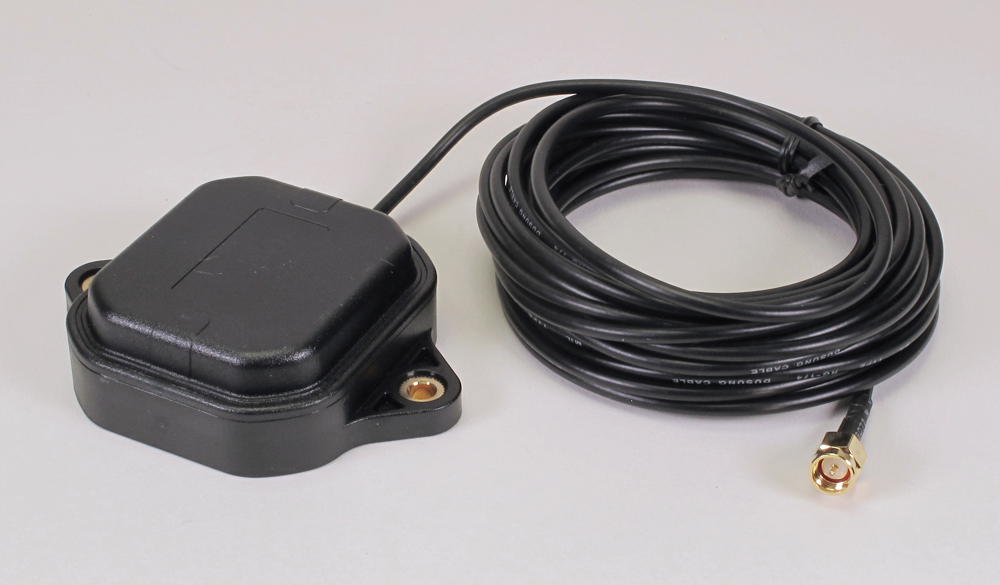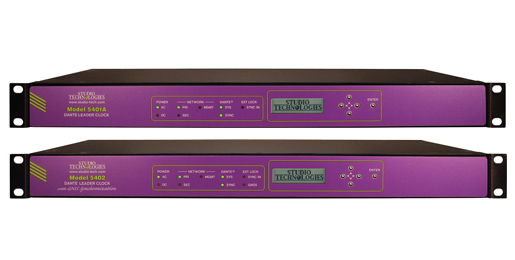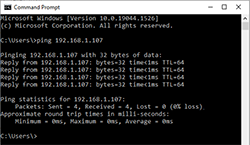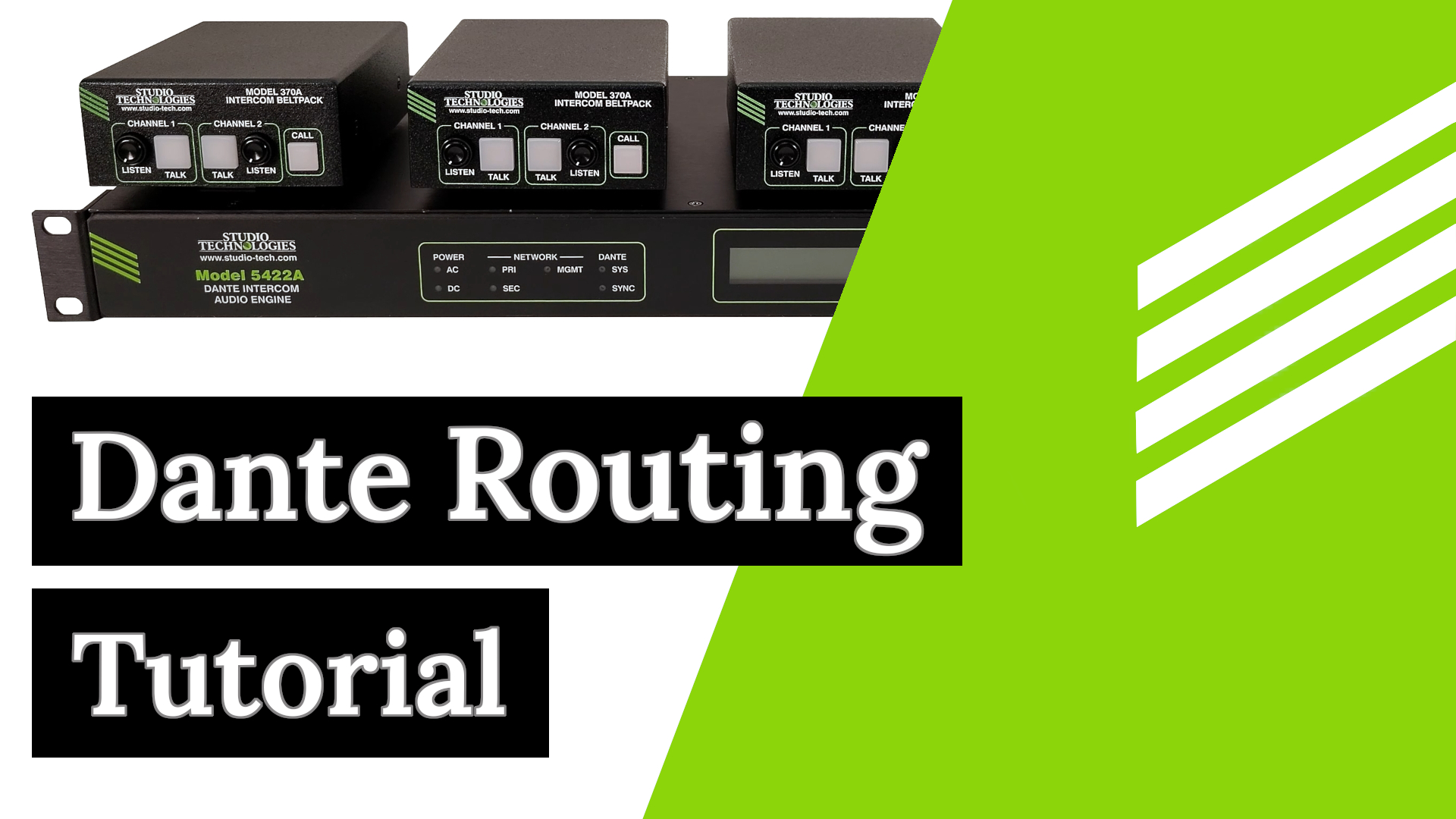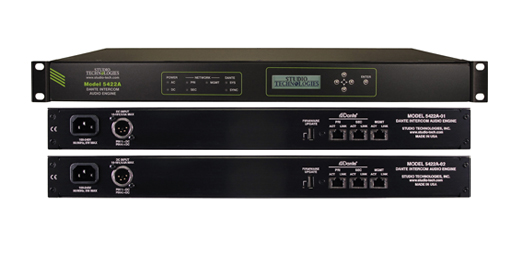18-Aug-2025
Dante
Model 5402
Performance
This discussion relates to the topic of antennas and cabling that may be utilized in conjunction with a Studio Technologies, Inc. Model 5402 Dante Leader Clock with GNSS Synchronization.
We’ll begin by citing Google’s AI Overview of GNSS:
GNSS, or Global Navigation Satellite System, refers to any satellite constellation that provides global positioning, navigation, and timing services. It’s a technology that allows users to determine their location on Earth using signals from multiple satellites.
Read Full Tech Note
05-May-2023
Dante
Model 5421
Model 5422A
Performance
High-frequency in-band call signals are often associated with party-line (PL) user intercom devices. Typically 20 kHz and contained within an audio channel, these signals can be used to activate (“trigger”) a visual and/or audible indicator on a user beltpack or console device. A number of Dante®-enabled devices from Studio Technologies support this type of call signal. At the present time, high-frequency call signal capability is typically not compatible with the auto mix function as implemented in the Studio Technologies’
Read Full Tech Note
07-Apr-2023
Dante Clocking
Performance
There’s no problem with an application using two of the Studio Technologies’ Dante Leader Clock units on a Dante network to achieve redundant, “hot standby,” or backup Leader Clock support. A valid implementation could consist of two Model 5401A Dante Leader Clock units, two Model 5402 Dante Leader Clock with GNSS Synchronization units, or one each Model 5401A and Model 5402. Unfortunately, while overall the performance will be good, there is one issue that makes deployment not as effective as Studio Technologies would like.
Read Full Tech Note
22-Mar-2023
Model 76
Model 76B
Performance
The Models 76 and 76B Central Controllers were manufactured for a number of years but were discontinued in August of 2012 due to parts availability and decrease in demand. They were excellent products, most of which are still in use by many facilities. We have become aware that after ten or more years of field operation an oscillation in the range of 17-18 kHz can appear in the units’ analog output channels. It was found that the units’
Read Full Tech Note
14-Mar-2022
Performance
The ping command can be very useful, helping to determine if a network-connected device is available and functioning correctly. (Ping is a utility that was developed in the 1980s and utilizes the ICMP Echo Request and ICMP Echo Reply network resources.) The management ports on a number of Studio Technologies’ products support the ping command. These include the Models 792, 5401, 5401A, 5402, 5412, 5418, 5422, 5422A, 5482, 5512, and 5518. It’s important to note that one user issue can arise when “pinging”
Read Full Tech Note
16-Sep-2021
Dante
Intercom Audio Engine
Model 5422A
Performance
A Model 5422A Dante Intercom Audio Engine has a maximum group size of 32 channels. (In this case, the one group would be using all 32 channels of an audio engine.) So, in theory, a 32-channel group configured for the Party-Line operating mode would allow a maximum of 32 users to be part of that party-line (PL) circuit or channel. In the vast majority of applications that should be sufficient; having anything close to 32 users on the same PL would be an exception.
Read Full Tech Note

